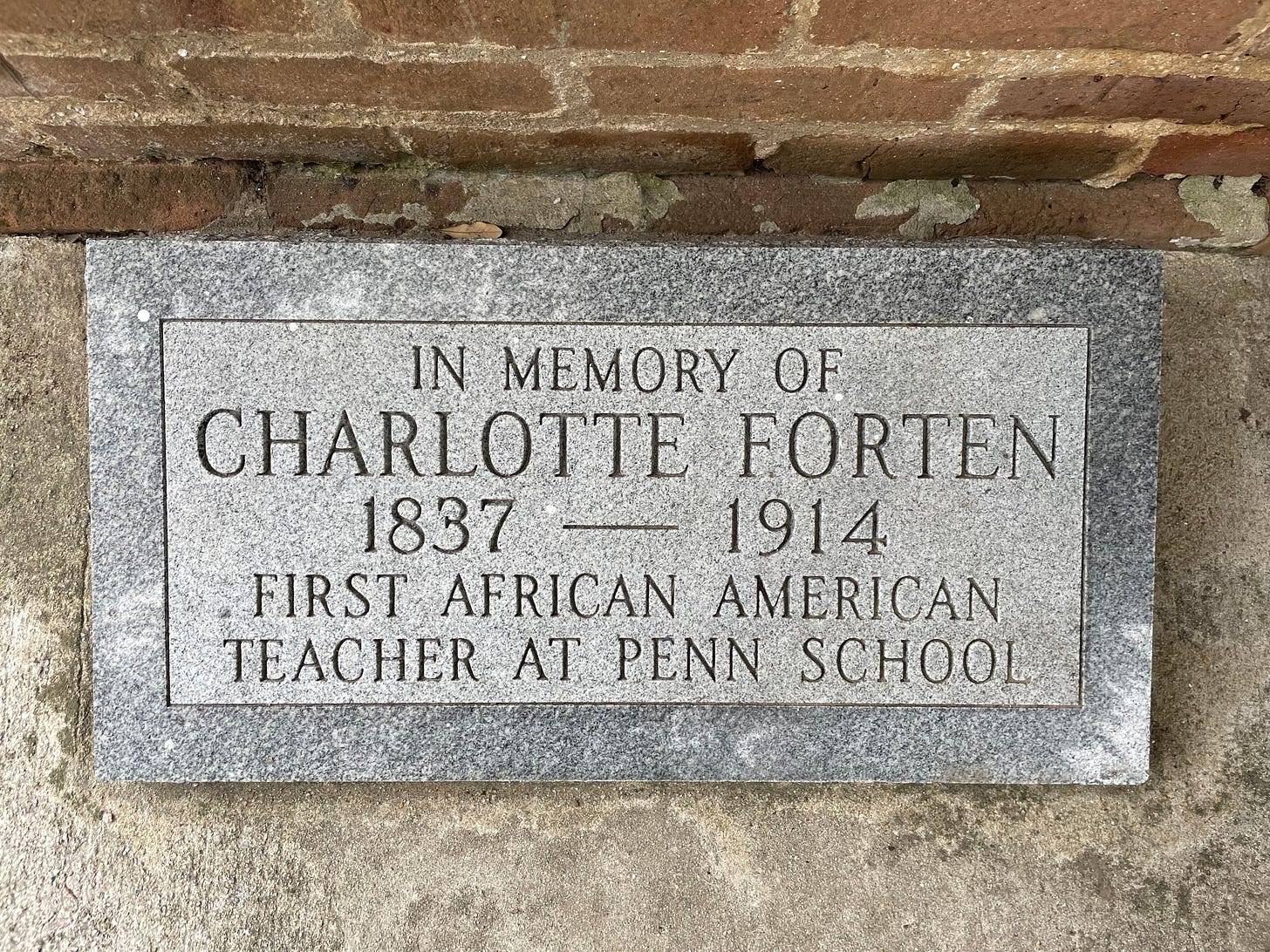The rain here today in Beaufort, South Carolina hasn’t slowed me down one bit. I spent most of the morning and early afternoon at Penn Center (formerly, the Penn School) on St. Helena’s Island, which is really the heart of the Port Royal Experiment. Beginning in 1862 norther missionaries/reformers or “Giddeonites” flocked to this area to begin educating the thousands of formerly enslaved men, women, and children that remained under the direction of the U.S. military.
The Penn School was founded in 1862 by Laura Towne and Ellen Murray. They eventually moved into Brick Baptist Church, which was constructed by enslaved workers for the area’s slaveowners in 1855. After the U.S. military moved in, enslaved utilized it for their own worhship services.
This particular building, on the Penn Center campus, was at the top of my list of places to visit given the wonderful account left by Robert Gould Shaw after a visit to the site on July 4, 1863.
It should come as no surprise that Shaw had a complicated view of African Americans. His limited interaction with free Blacks in the North in no way prepared him for what he experienced while stationed in the Low Country. The culture utterly baffled him as it did for many of the other northern reformers and members of the military.
“The licentiousness among the negroes is very great,” he wrote to his mother in early July 1863, “but they say that the improvement in that respect, is very encouraging.” “They feel no shame about it at all, and hardly understand that it is wrong. As a general thing the men seem to me to have better faces than the women.”
But on July 4, Shaw celebrated what he saw taking place around him on St. Helenas. Black children were going to school and learning to read and the population appeared to be adopting the nation’s civic culture.
Today there has been a great meeting for the coloured people, at the Batptist Church 6 or 7 miles from camp. I rode down there, and heard a speech from a coloured preacher from Baltimore, named Lynch, & another from Mr. [word crossed out] which latter was very bad. It may have seemed so to me, because [two words illegible] very much. (This is private).
Mr. Lynch was very eloquent. Can you imagine anything more wonderful than a coloured-Abolitionist meeting on a South Carolina plantation? Here were collected all the freed slaves on this Island listening to the most ultra abolition speechess, that could me made; while two years ago, their masters wre still here, the lords of the soil & of them. Now they all own a little themselves, go to school, to church, and work for wages. It is the most extraordinary change. Such things oblige a man to believe that God isn’t very far off.
A little black boy read the Declaration of Independence, and then, they all sang some of their hymns. The effect was grand. I would have given anything to have had you there. I thought of you all the time. They day was beautiful and the crowd was collected in the churchyard under some manficient old oaks, covered with the long, hanging, grey moss, which grows on the trees here. they gay dresses & turbans of the women made the sight very brilliant.
Miss Forten promised to write me out the words of some of the hymns they sang, which I will send to you. (p. 373 in BECF)
The sentiments expressed by Shaw certainly reflect the paternalism and expectations of many of the reformers working in the area. We should also keep in mind that Shaw wrote this account to and very much for his mother. He tended to put his best abolitionist-face forward when writing to her about the lives of the enslaved he encountered during the war.
In this letter, however, Shaw came closest to acknowledging his place in what his parents always hoped he would acknowledge—this was a war to end slavery.
Robert Gould Shaw had exactly two weeks to live when he wrote this account.






Fascinating stuff. I'm thinking this book of yours is going to make some marks, as well it should.
Another quality read thank you